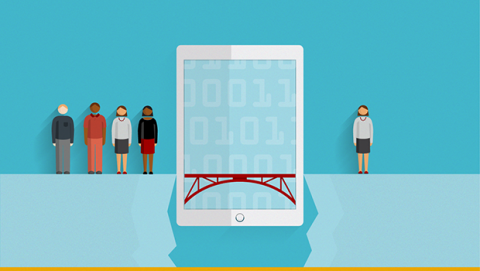While digital transformation has been an IT industry priority for years, the pandemic accelerated the transition. Companies looked to run operations from anywhere and anytime, increase nimbleness, and build protection from disruption. Remote work and contactless retail transactions are two prime examples.
While the operational impact of the pandemic is slowly waning, it’s clear that many attitudes and expectations have permanently shifted for both employees and customers. Shoppers, for example, now expect a seamless experience between online and in-store buying – and many prefer the convenience of curbside pickup. Employees have proven their ability to work and remain productive from anywhere and anytime with connected devices, applications, and connectivity.
All of this means that the strong demand for digital transformation isn’t lessening. Organizations should be examining all aspects of their operations for opportunities to enact digital change that can unlock benefits for employees and deliver valuable interactions and experiences for their customers. Consider these speed-minded tips:
[ Where is your team's digital transformation work stalling? Get the eBook: What's slowing down your Digital Transformation? 8 questions to ask. ]
1. Embrace digital transformation tools quickly but intelligently
It’s a mistake to assume that digital transformation is mostly about purchasing and deploying new technology. Neglecting to see the big picture and plan for it can result in a failed digital transformation effort. It must be a holistic evolution that includes key stakeholder buy-in and change management to promote adoption. Look at the outcomes you want to achieve and set clear and achievable goals. Then craft a solution that’ll get you there.
[ Digital transformation is about more than just speed. Also read Digital transformation: Are you using the right metrics? ]
2. Lean into mobile-first or mobile-only
The term “mobile-first” began as a design goal for websites, but it’s come to mean an overarching organizational mindset that puts mobile at the heart of strategy, operations, and the user experience. Mobile solutions increase automation, improve workflows, and create better experiences for both users and customers. I think most organizations would agree that mobile is a key component of digital transformation.
Some advantages of a mobile-first strategy include:
Speed: Manual processes that slow organizations down can be automated with mobile devices that enable digital workflows.
Meeting customer and employee expectations: Consumers are increasingly transacting on their mobile devices, and mobile solutions can help make online and in-person experiences seamless. Mobile devices allow employees to contribute from anywhere.
Protection from disruption: Mobile solutions are flexible enough to modify and pivot quickly as business conditions change.
Futureproofing: Replacing manual processes and workflows with digital provides valuable data that helps identify trends and enables better forecasting to keep companies prepared.
Cost reduction: Mobile-first strategies improve productivity and efficiency, which lowers expenses.
3. Treat employees as collaborative partners
Organizations should inspire employees to be a collaborative part of their digital transformation. Not only do employees and end-users need to feel invested in the process, but they can also provide valuable insights about their needs and workflows that are critical to designing an effective technology strategy. That can dramatically impact user adoption and result in delayed – or even failed – digital transformation initiatives.
4. Remind employees that they are important more often
An excellent customer experience happens naturally when employees are engaged and connected to the company’s brand and digital transformation. Company leaders should remember this and frequently communicate about how important it is to overall success.
While businesses want to create a personalized experience for their customers, they need to build a digital platform so employees can deliver first. Understanding the different customer touchpoints will lead to a more seamless experience.
Employees need to be aligned, prepared, and supported to deliver the desired customer experience. Technology is just a tool. The face, the voice, and the engagement outcome is the experience. Companies that consider how their employees are able to deliver on customer expectations will be set up for success.
[ Want more advice? Watch the on-demand webinar, The future of leading digital innovation: What's next?, with Nancy Giordano, plus Red Hat's Margaret Dawson and IDC's Nancy Gohring. ]




